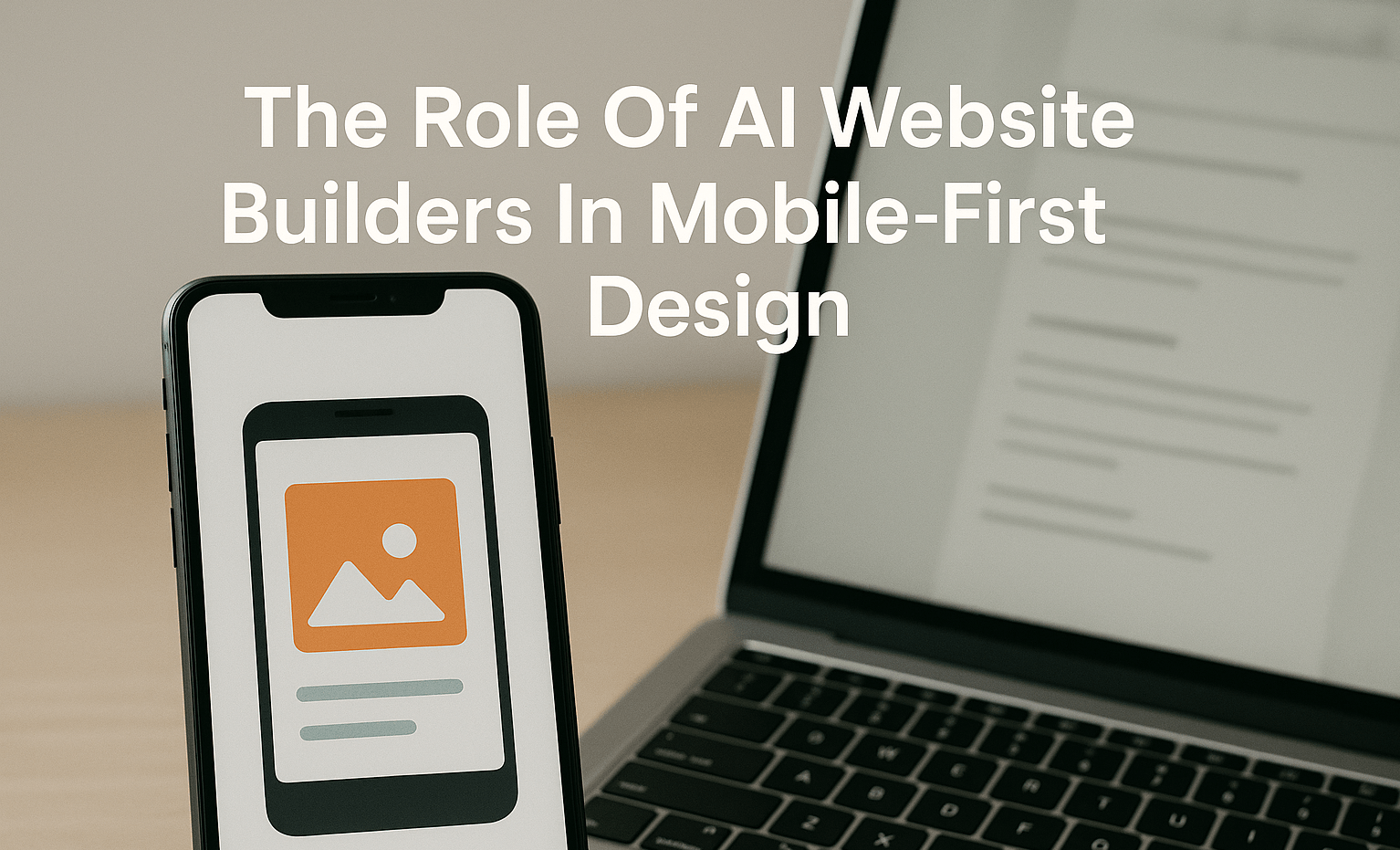Best SEO Extensions for Your Magento E-commerce Store
- 181637 Views
- 4
Blog
 295
295  0 Comments
0 Comments

In this digital landscape, mobile-first design is not just a trend but a necessity. The majority of the web traffic comes from mobiles or smartphones; businesses no longer can afford to treat mobile responsiveness as an afterthought.
This is where the best AI builder has the potential to become transformative. They use both automation and smart design knowledge to empower businesses, freelancers, and entrepreneurs to create visually appealing websites that can provide mobile experiences from an early stage.
Furthermore, businesses purchase professional email to build a strong online identity. This ensures every communication you send reinforces your brand's professionalism along with your profound AI website design.
Mobile-first design prioritizes mobile users in website building. It ensures layouts, navigation, and functionality that are seamless on smaller screens. Conventional approaches, designed for desktop first and adapted later, often resulted in broken mobile experiences.
For businesses, inadequate mobile optimization can directly harm user engagement, bounce rates, and even SEO rankings, as search engines favor mobile-optimized websites. AI website builders reduce much of this pain by integrating mobile-first logic into their designs, naturally making websites responsive without requiring a lot of manual work.
One major advantage of an AI website builder is the ability to generate responsive layouts automatically. Rather than manually changing CSS or testing at several screen sizes, artificial intelligence-based engines can analyze the design-based features and modify them to suit mobile, tablet, and desktop.
Visually, AI can scale up images, make text blocks easier to read, and restructure sections to appear on the screen of a mobile device. This saves time for content creators and ensures users have a seamless experience, allowing them to browse content interactively on any device.
Navigation is the major part of mobile design. Large desktop menus don’t translate well on smaller screens. It often causes frustration to users. AI website builders solve this challenge by intelligently adapting navigation to mobile contexts.
They can automatically create collapsible navigation and insert touch-sensitive buttons, prioritizing key actions for users on the move. In this way, AI tools make it easier to maintain the functionality of even more complicated websites because they are user-friendly on mobile devices without necessarily having to redesign them all manually.
Mobile-first design isn’t just about looks, but also about speed. Mobile users expect faster loading times, and a heavy and unoptimized website drives them away fast. On its part, AI website builders often have optimization functionality such as automatically compressing images, using lazy loading, and lean code profiling.
These performance optimizations are particularly important to guarantee prompt loading on different types of mobile connections. The benefits of employing AI builders to automate technical optimizations involve enabling businesses to stay within the demands of the faster-moving audience, as well as to improve their Google search position.
AI web-builders surpass traditional structural design in that they allow for personalization. They monitor activity to ensure the set-up changes or content, providing users with a better mobile experience. Among others, AI can discover the most frequently-used features in the mobile version, compress forms to make them faster to complete, or recommend location-based options.
With this degree of personalization, getting things right on mobile would not mean merely fitting onto mobile; it could mean more conversions and engagement for end users on mobile.
Accessibility is the crucial factor in the mobile-first design. A mobile-friendly website should be usable for people with disabilities. It includes those who rely on screen readers or voice navigation. Many AI website builders include checks for accessibility into the design logic that they are programmed to follow. These limitations and checks ensure that color contrast is sufficient, text scales appropriately, and alt-text is applied where images are injected.
By integrating accessibility into mobile-first practices, AI tools enable companies to enhance accessibility in line with global standards and expand their market reach. Inclusivity becomes part of the design process as opposed to an afterthought.
AI website builders are changing the way businesses and innovators are approaching mobile-first design. These tools automate responsiveness, enhance optimization, and promote smart navigation, thereby reducing the time-consuming steps that have traditionally made mobile-friendly websites costly to build.
For startups, agencies, and small businesses, this means the ability to launch professional, mobile-optimized websites quickly and without extensive technical experience. You can visit or contact to the responsive website development company which provides both modern and traditional services. As mobile continues to penetrate and dominate digital consumption, these AI-enhanced builders are putting your online presence not just in step with every mobile user, but in a position to be future-ready.
Ready to bring your project to life? Tell us what you need and we’ll get back with a tailored quote.